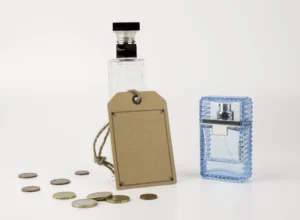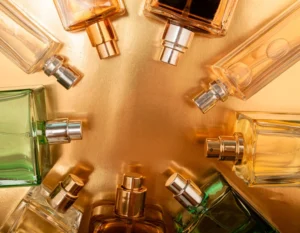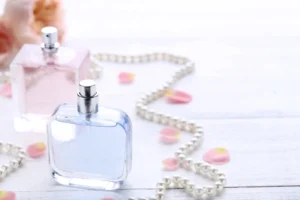Your success in the perfume market isn’t only about having a great product—it’s also about how smartly you set its price. Understanding proper pricing mechanisms and applying them effectively is what drives your business toward sustainable growth.
So, why is correct perfume pricing so important? What are the key factors that influence it? How do you choose the best pricing strategy for your business? And what mistakes should you avoid when setting prices? These are the questions we’ll answer in today’s Jasmine article. Stay with us.
The Importance of Pricing Perfumes Correctly
Let’s walk you through why proper pricing matters for your perfume and how it impacts your products and your business in the market.
Ensuring Sustainable Profitability
Accurate pricing covers all costs—from raw materials to marketing and operations. Setting prices carefully helps you secure a healthy profit margin, supporting your business continuity and long-term growth while ensuring financial stability.
Boosting Competitiveness
Without sacrificing quality or profit margins. By understanding your competitors’ pricing strategies and adjusting yours smartly, you can attract a wider customer base. Striking the right balance between price and quality positions your brand strongly in the market.
Encouraging Purchase Decisions
A well-considered price reflects the true value of your perfume without raising doubts about its quality. Avoid unjustified overpricing or underpricing, as both can drive customers away or reduce trust in your product. Consult Jasmine for a pricing strategy that effectively drives sales.
Managing Inventory Efficiently
Proper pricing helps you maintain balanced sales, preventing excess stock or rapid sellouts. This reduces additional storage costs, ensures product availability when needed, and keeps your cash flow healthy.
Shaping Brand Identity
Your price reflects your brand’s identity and market position, whether luxury or affordable. Smart pricing reinforces customer trust and affirms the value of your products. By aligning your pricing with product quality, you strengthen and elevate your brand image.
To compete effectively, focus on professional pricing. At Jasmine, we help you develop a strategy tailored to your brand that guarantees distinction. Don’t hesitate to reach out to us.
Also read: Top 10 Perfume Terms for Retailers (Ar & En)

Key Factors in Perfume Pricing
Before setting a pricing strategy for your perfumes, it’s essential to understand the main factors that affect both cost and perceived market value.
Production Costs and Ingredients
This includes the direct cost of raw materials such as fragrance oils, alcohol, and fixatives, along with packaging elements like bottles and outer boxes, plus labor and manufacturing expenses. Knowing these costs is the foundation of any profitable pricing strategy.
Brand Positioning and Image
Luxury brands with strong reputations and exceptional quality command higher prices. Whether your brand identity reflects innovation, authenticity, or prestige, it significantly influences how much consumers are willing to pay. Here, the price reflects perceived value, not just cost.
Competitor and Market Analysis
Monitoring competitor pricing and understanding your target market segment helps you position your product effectively. Are you aiming for the luxury, mid-range, or budget market? Identifying competitor strengths and weaknesses allows you to set a price that stands out, neither overpriced nor undervalued.
Distribution and Marketing Channels
Your chosen sales channels—whether wholesalers, retailers, or online stores—affect the final cost, each carrying its own commissions and overheads. Add to that marketing campaign expenses, which also influence the end price.
Size and Concentration (Oil Percentage)
Perfume prices vary depending on bottle size and concentration. High-concentration fragrances such as Parfum or Eau de Parfum are priced higher than lighter categories like Eau de Toilette or Eau de Cologne. Consumers pay for intensity and longevity, which directly impacts pricing.
Import Duties and Shipping Costs
International duties and shipping add significant costs to the base price. These vary depending on product classification and country regulations, while shipping costs depend on order volume and distance. Miscalculating these expenses can greatly reduce profits.
To design a strong pricing strategy that maximizes your profitability, connect with the experts at Jasmine Perfumes.

How to choose the right pricing strategy?
Keep in mind that your pricing strategy directly impacts your market position and the appeal of your products. So, what steps should you take?
Analyze the Competition
Study competitor pricing in your local market to set a competitive range. This positions your perfumes attractively without sacrificing profit. Ignoring competition could cost you valuable customers.
Understand Target Customers
Identify whether your audience prefers luxury or affordable perfumes. Aligning your pricing with their expectations strengthens trust and encourages loyalty.
Account for All Expenses
Factor in every expense, including imports and packaging. Pricing must cover costs while ensuring a reasonable profit margin. Overlooking these costs reduces profitability.
Adjust Prices Seasonally
Adjust pricing during peak seasons and holidays to boost sales. Offer strategic discounts that attract customers while maintaining your brand’s value.
Cost-based versus value-based pricing
It’s essential to understand the difference between these two approaches so you can set perfume prices that align with your business goals and product positioning.
Value-Based Pricing
This strategy focuses on the perceived value of the perfume in the customer’s mind, rather than just its production cost. Here, the price reflects emotional benefits and brand prestige, allowing for higher profit margins, particularly suitable for luxury fragrances targeting niche segments.
Cost-Based Pricing
This approach calculates all expenses involved in producing the perfume, then adds a fixed or variable profit margin. Costs include raw materials, manufacturing, packaging, and shipping. It’s best suited for mass-produced perfumes and highly competitive markets where cost efficiency is critical.
Pricing for Luxury vs. Mass-Market Perfume
Pricing strategies differ significantly between luxury perfumes and mass-market fragrances aimed at broader audiences.
Luxury Perfume Pricing
This strategy adopts a premium price point that reflects exclusivity, superior ingredient quality, elegant packaging, and a prestigious brand image. Marketing focuses on emotional value and brand storytelling, creating a sense of rarity and luxury. For the discerning consumer, price is not a barrier but part of the experience of owning something exceptional.
Mass-Market Perfume Pricing
Mass-market fragrances rely on competitive, lower pricing to appeal to the widest possible customer base. The focus here is on high sales volume and cost-efficient production. Quality is acceptable, packaging is practical rather than lavish, and affordability is the key driver of demand.
When to use psychological pricing?
Psychological pricing influences consumer decisions by appealing to their perception of value. Used strategically, it can increase the attractiveness of your perfumes and boost sales. Here’s when to apply it:
Enhancing Perceived Value
Using odd numbers (e.g., 99.99 instead of 100) makes the price feel significantly lower than it actually is. Customers perceive it as “less than” the full amount, encouraging purchases and strengthening the perfume’s perceived value.
Creating Urgency or Deal in Sales
Pricing just below a round number gives customers the impression they’re getting a great deal or a rare opportunity. This perception of added value drives higher purchase intent.
Boosting Immediate Sales
When you want to trigger quick buying decisions, psychological pricing is highly effective. Prices ending in 9 or 5 create a sense of urgency, making perfumes feel like limited-time offers and encouraging instant purchases.
Influencing Quality Perception
Slightly higher prices (e.g., 9.99 instead of 9.50) can signal better quality. This appeals to customers who equate higher cost with superior value, motivating them to choose your fragrance over cheaper options.
Launching a New Perfume
Psychological pricing helps new products gain traction by making them appear more affordable. Prices like 49.95 seem more budget-friendly, supporting rapid market penetration and stronger promotional campaigns.
For the best pricing strategies to maximize profitability, consult the experts at Jasmine Perfumes today.
Common Perfume Pricing Mistakes to Avoid
Overlooking Indirect Operating Costs
Expenses like store rent, utility bills, and administrative staff salaries are often forgotten. Ignoring these leads to inaccurate pricing and slimmer profit margins than expected.
Failing to Monitor Competitor Pricing
Pricing in isolation from competitors is a major pitfall. Setting your prices too high can drive customers away, while pricing too low reduces profitability.
Focusing Only on Cost, Not Value
Basing prices purely on costs limits your profit potential. Luxury perfumes carry added value that goes beyond their ingredients. Recognizing this allows you to price in a way that reflects quality, exclusivity, and brand appeal.
Forgetting Shipping and Insurance Fees
When importing perfumes, shipping and insurance costs are not always included in the initial product price. Overlooking these increases your actual costs and eats into profits.
Ignoring Market Fluctuations
Raw material prices, shipping fees, and exchange rates change constantly. Keeping perfume prices fixed for too long without accounting for these shifts can result in financial losses.
Neglecting Customer Feedback
Setting prices based only on internal analysis is not enough. Listening to customer perceptions helps you refine your pricing strategy to better meet market expectations.
Avoid these mistakes with Jasmine. Our team designs the right pricing strategies to protect your margins and help you achieve sustainable growth. Contact us today.

Consult Jasmine: The Leading Perfume and Fragrance Manufacturer in Turkey
When it comes to perfume manufacturing, partnering with a specialized factory like Jasmine is a smart step to ensure product quality and market success. With us, you benefit from:
- Accurate pricing guidance based on the latest market data.
- Expert insights in selecting the right ingredients and designs for your product.
- Support in overcoming import and customs challenges.
- Assurance of compliance with international standards and regulations.
- Reliable logistics solutions to guarantee safe delivery of your shipments.
Our team is ready to support you at every step on your journey to excellence. Contact us today.
Also read: Leading Private Label Perfume Manufacturer in Turkey
FAQs About Perfume Pricing Strategy
How do you rate perfumes?
Perfume pricing depends on several factors, including production costs, desired profit margins, and market positioning. The goal is to balance covering expenses with appealing to the target customer segment.
What is a perfume pricing strategy?
A perfume pricing strategy refers to the chosen approach for setting prices, such as value-based pricing, which focuses on perceived customer value, or cost-based pricing, which is tied to production costs. The right approach depends on the fragrance type and its intended audience.
What is the profit margin of perfumes?
Profit margins in the perfume industry are generally high, typically ranging from 50% to 90% of the retail price. Niche or locally manufactured perfumes, and those made with lower-cost ingredients, can sometimes yield even higher margins.
What determines the price of a perfume?
Key factors include the quality and concentration of ingredients, packaging costs, brand value, and marketing expenses. Market dynamics such as demand and competition also play a crucial role.
How much does it cost to produce a perfume?
Production costs vary based on bottle design, material quality, and production scale. A standard bottle may cost between $2 and $8, while custom luxury bottles can exceed $50.